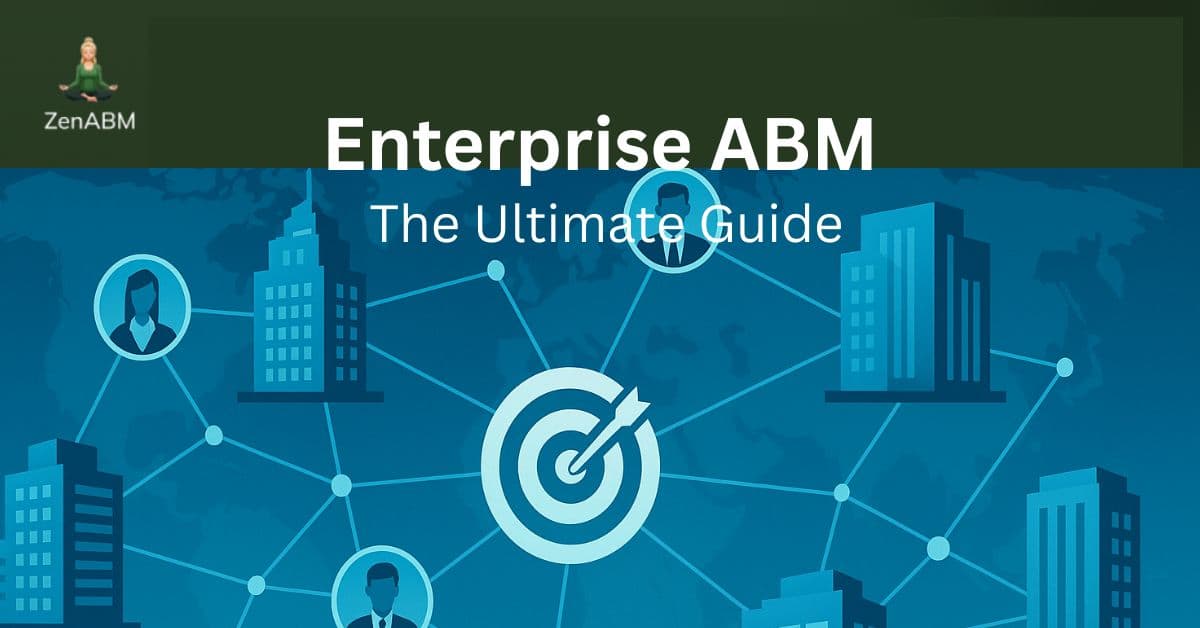
I have discussed it all in this ultimate enterprise ABM guide: from selecting target accounts and tiering strategies to orchestrating personalised campaigns at scale, aligning with RevOps, integrating advanced frameworks (ever heard of SPICED or MEDDPICC?), and measurement.
I’ll also cover how ZenABM can help you along the way.
Read on…
Enterprise ABM (Account-Based Marketing) means playing at the highest level of B2B marketing and sales.
We’re talking multi-million dollar deals, buying committees of 10+ stakeholders, and sales cycles that span quarters (or years). In this arena, spray-and-pray demand gen simply doesn’t cut it.
You can’t treat a Fortune 500 account the same way you’d treat an SMB lead. Enterprise ABM is all about being laser-focused on the accounts that matter most. It’s about treating each as a “market of one” and executing coordinated, personalized campaigns that outflank your competition and win over entire organizations.
Enterprise ABM also means embracing complexity.
You’ll be dealing with:
Now, before I get into how to do enterprise ABM, let’s quickly address the strategic approach and frameworks that underpin successful programs.
Traditionally, ABM is described in three formats:
Ultra-personalized marketing for individual top-tier accounts. Every campaign, piece of content, and outreach is personalized to a single account’s context. This is for your “whales”: typically a handful of accounts that could each be worth seven or eight figures.
Personalized campaigns for a small cluster of similar accounts (e.g. 5–15 accounts) often within a specific industry or segment. Some customization, but scalable across that cluster. Great for mid-tier strategic accounts.
Broader programs targeting dozens or even hundreds of accounts with technology-driven personalization (think dynamic ads, automated nurtures). Used for lower-tier target accounts or as a way to extend ABM principles to a wider audience.
This is often depicted as a triangle or pyramid of effort vs. scale:
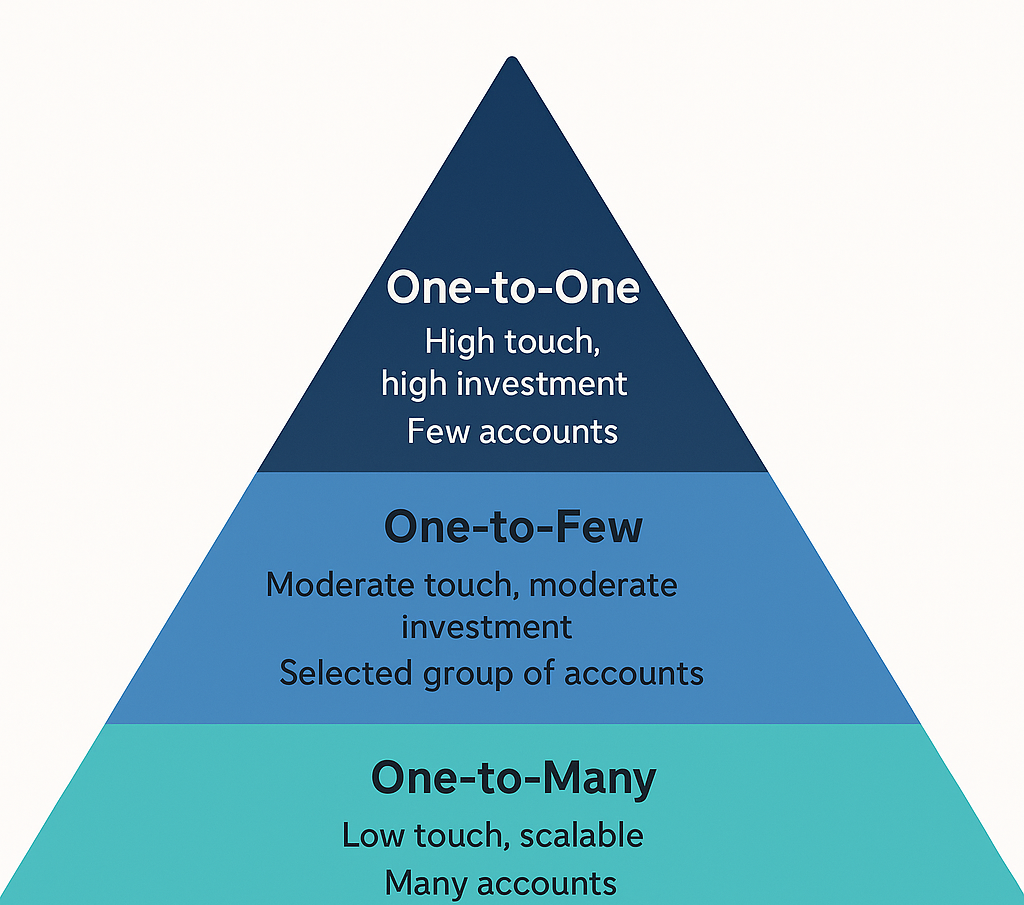
Few accounts get the full white-glove 1:1 treatment at the top, while many accounts get lighter-touch programmatic plays at the bottom.
And yes, that classic model still has merit.
In fact, the Global Account-Based Marketing Benchmark report found that every three in five organizations run multiple ABM styles in parallel (1:1, 1:few, 1:many).

Don’t get stuck on the triangle. Leading ABM practitioners are warning that rigidly sticking to “1:1 vs 1:few vs 1:many” silos can limit your agility. “The ‘triangle’ is dead,” says Rhiannon Blackwell (ABM Leader at PwC) in a guide by Momentum ITSMA. She adds, “We need to be more flexible and responsive, moving beyond the layers of the triangle to adopt a dynamic, client-centric strategy that aligns with today’s complex market.”
In practice, that means you might blend approaches or “sense-and-respond” to account needs in real time rather than pre-defining exactly how each account is treated.
For example, if a mid-tier account suddenly shows huge potential (say, new leadership expresses urgent pain your solution fixes), an agile ABM team will dial up the personalization and investment for that account on the fly, effectively giving it 1:1 treatment even if it started in a 1:few program.
Conversely, if a supposed Tier 1 account goes radio-silent, you might scale back and automate some touches until they re-engage. Flexibility is key.
Bottom line: Have a tiered strategy, but stay fluid.
Pro Tip: If you’re starting with enterprise ABM, don’t bite off more than you can chew. It’s better to execute true 1:1 ABM for 5 flagship accounts flawlessly than to pretend you’re doing ABM for 500 accounts and just spam them with form emails. You can expand to 1:few and 1:many once you have a core program running. As we’ll discuss later, some experts even suggest starting ABM with your existing customer accounts first (to drive expansion revenue) before focusing on new logo acquisition.
Now, let’s get into the meat: How to execute enterprise ABM step by step: from selecting accounts and research and personalization, to multi-channel campaigns, alignment, tech, and beyond.
Your list is your strategy.”
This is true for any ABM but becomes a make-or-break deal for enterprise ABM.
Here’s how to go about target account selection for a solid enterprise ABM strategy:
Your ICP shouldn’t be a vague persona sketch, but a data-driven profile of the accounts that are most likely to become high-value customers.
Consider firmographics (industry, size, geography), technographics (what tech stack do they use that complements your product), pain points and use cases, and any predictive factors you know correlate with deal success.
If you have existing enterprise customers, analyze what the best ones have in common.
Utilize your CRM and third-party data to score potential accounts against your ICP criteria (revenue, employee count, growth rates, etc.).
Then layer in intent data, including signals that an account is actively researching your space or has relevant needs.
For instance, if Bombora or 6sense shows that a target account has a surge in interest for “cloud security solutions” and you sell that, it’s a strong indicator.
Also, get sales input. Your sales reps (and customer success for expansion targets) often have knowledge about which companies have momentum or internal projects that align with your product. You can also hold weekly RevOps meetings where marketing and sales review target account candidates together, weighing data and a bit of gut feel.
Pro Tip: Instead of getting third-party keyword intent data from tools like 6sense or Bombora, you can embed the intent in your ads. For instance, if you sell a product management tool, you can show different ads for different features like product analytics, session recordings, etc. Something like this:
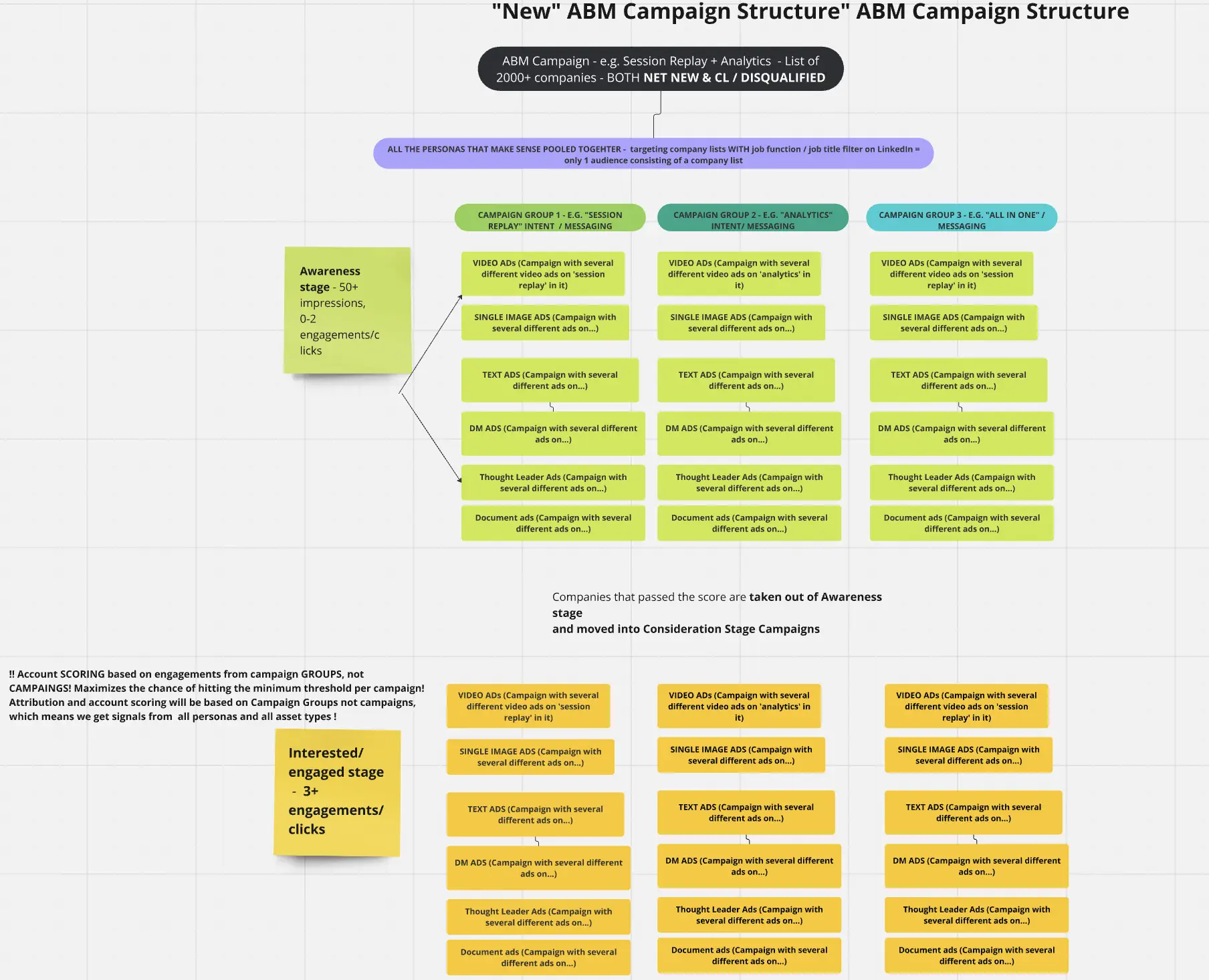
Then, in ZenABM, you can tag each ad campaign with specific intent. Once the campaign is live, ZenABM will group companies showing similar intent together:
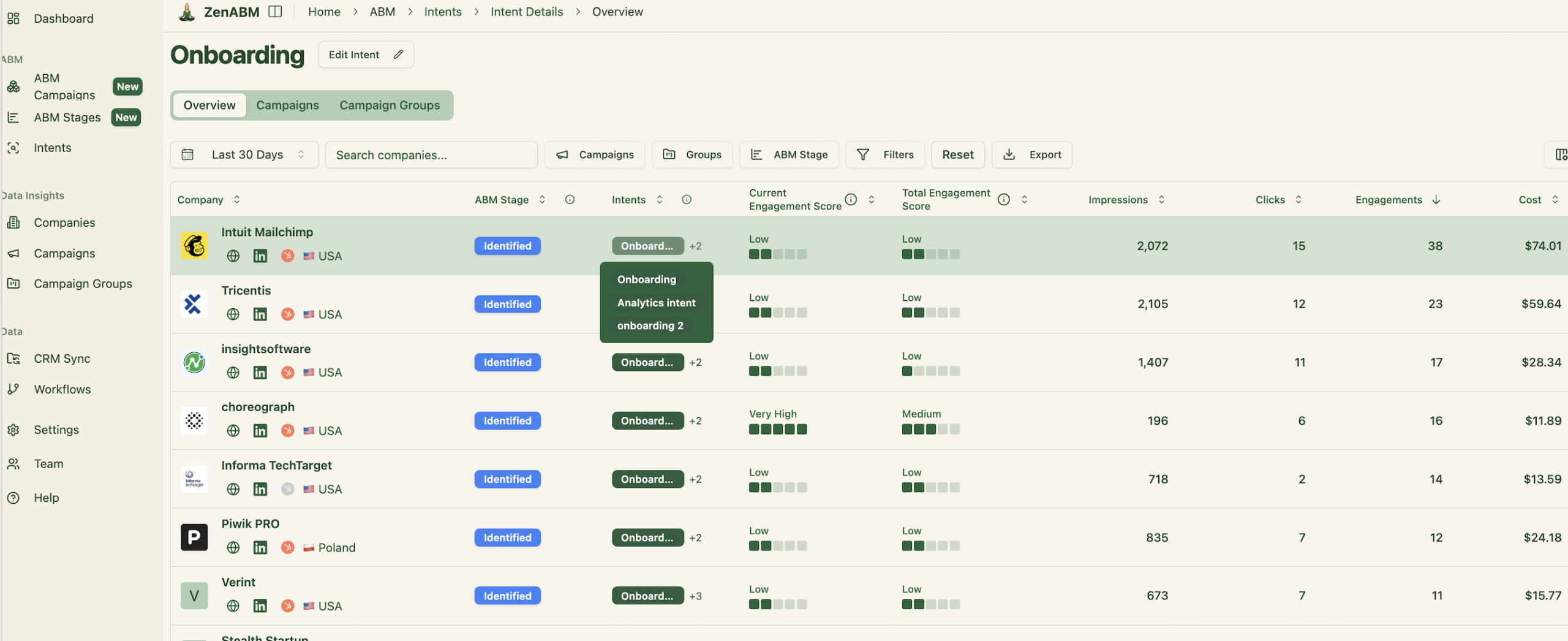
And it will also push intent data as a company property into your CRM for the convenience of your sales team:
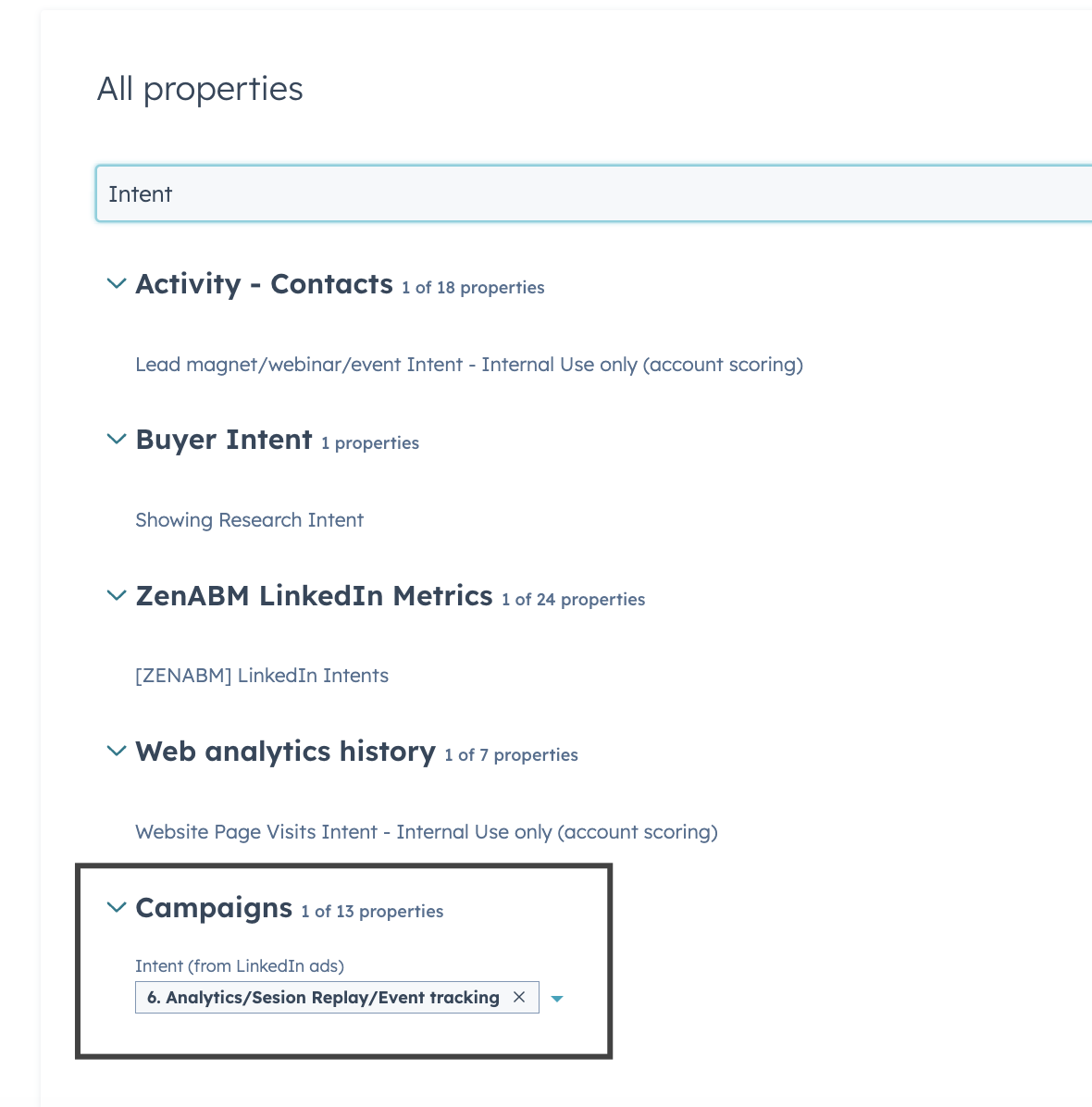
You’ll likely end up with a list of target accounts larger than you can handle with equal effort.
So segment them into priority tiers. Example: Tier 1 = top 10–20 accounts (1:1 ABM candidates), Tier 2 = next 50 accounts (maybe 1:few programs by vertical or region), Tier 3 = next 200 (lighter touch nurture, one-to-many).
Prioritize based on potential value (e.g. deal size potential or strategic logo value) and likelihood to close.
One Reddit ABM practitioner advised: “Segment by deal size instead of account type… Think scale constantly before putting guardrails.”

So, if a small account has a higher deal value, treat it like an enterprise account.
Account selection isn’t a one-time task.
Markets change, companies evolve.
Plan periodic reviews (quarterly or biannually) to reassess your target list.
Did new high-potential accounts emerge? Did some targets prove unresponsive or no longer fit?
Enterprise ABM leaders often adjust on the fly. They prefer dropping accounts that go dark, adding promising new ones, in a constant pursuit of focus.
In fact, high-performing programs often start small and expand. It’s common to pilot with, say, 20 accounts, then expand to 100 once the approach is proven
One more thing: Get buy-in on the target account list from sales leadership early. Nothing kills ABM faster than misalignment on who your “must-win” accounts are. The best practice is a joint sales–marketing exercise to pick accounts, often with sign-off from the VP of Sales or Chief Revenue Officer. When sales has had a hand in choosing the accounts, they’re emotionally invested in pursuing them and less likely to ignore the leads you generate from enterprise ABM efforts. Sales-marketing alignment is, in fact, the essence of ABM as per many experts like Dave Rigotti, and agreeing on target accounts is the first stepping stone for that alignment.
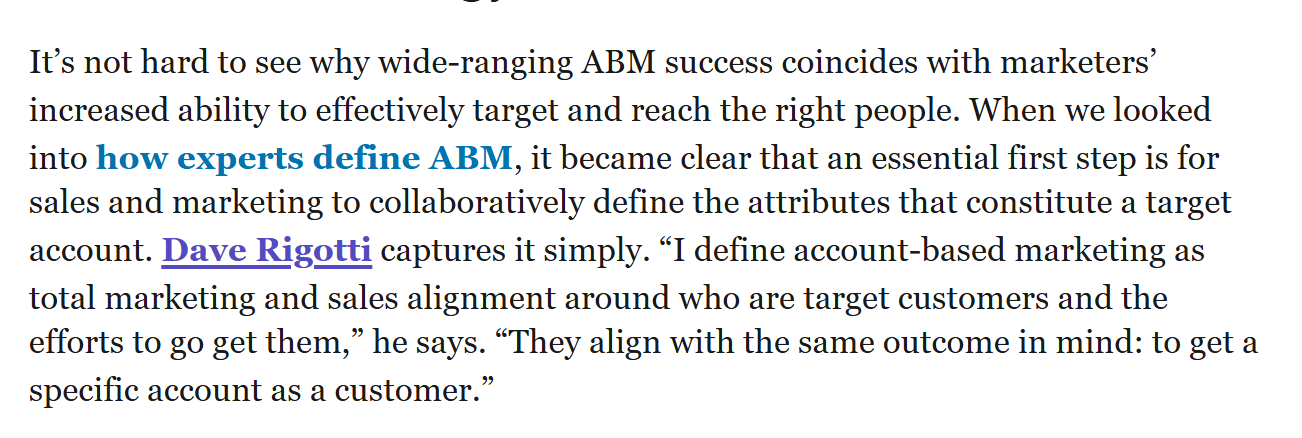
A Real Example: In a case study of an ABM pilot at CrossKnowledge, the marketing director, Ken, ensured everyone agreed on shifting to an account focus and which accounts to target. This alignment up front paved the way for a successful program that eventually sourced 60% of their enterprise pipeline via ABM.
At the enterprise level, surface-level token personalization (“Hi 𝑁𝑎𝑚𝑒, I see you’re in 𝐼𝑛𝑑𝑢𝑠𝑡𝑟𝑦”) is table stakes.
We need to go much deeper: Account-specific insights, hyper-relevant messaging, and bespoke content that speaks to each account’s unique situation.
How do you pull this off? By becoming part detective, part strategic storyteller.
I love how one marketer on Reddit described ABM as “Sherlock Holmes meets scalable strategy.”
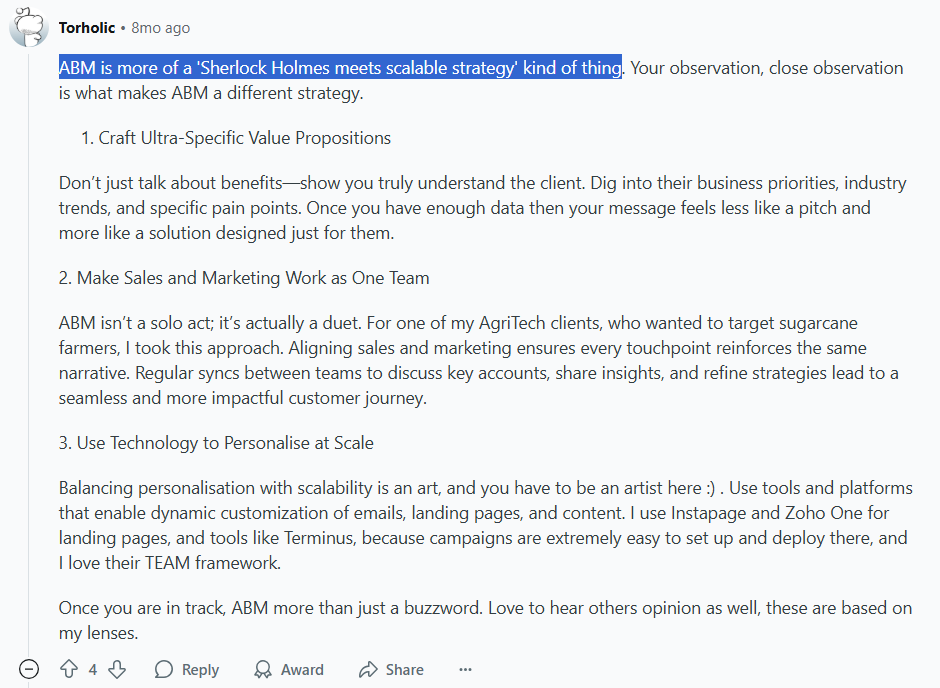
You must investigate the account thoroughly:
The goal is to understand the account’s business priorities, challenges, and goals almost as well as they do themselves.
Armed with that intel, you can go on to make ultra-specific value propositions for the account.
Let’s look at some practical techniques to personalize content at scale for your enterprise ABM strategy:
Build a one-pager or wiki for each target account, capturing key info:
For highly-engaged enterprise accounts, these dossiers can be even more than one page and highly detailed.
Here’s a free template (my pleasure):
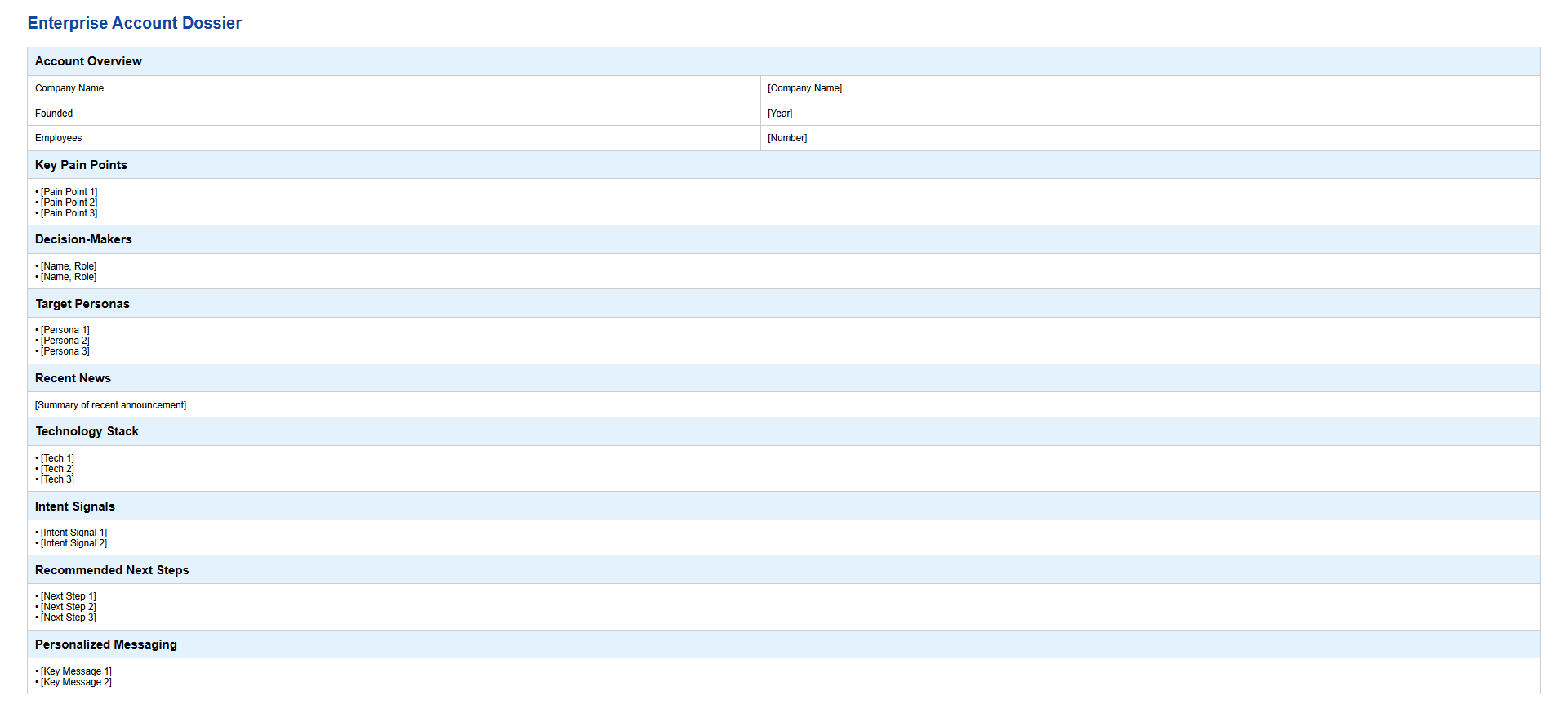
Pro Tip: Instead of just talking about the target account in the Dossier,
In your Dossier, you can include such look-alike case studies and also mention how you’ll emulate that for the target account.
Create personalized content, offers, and value props for that specific account.
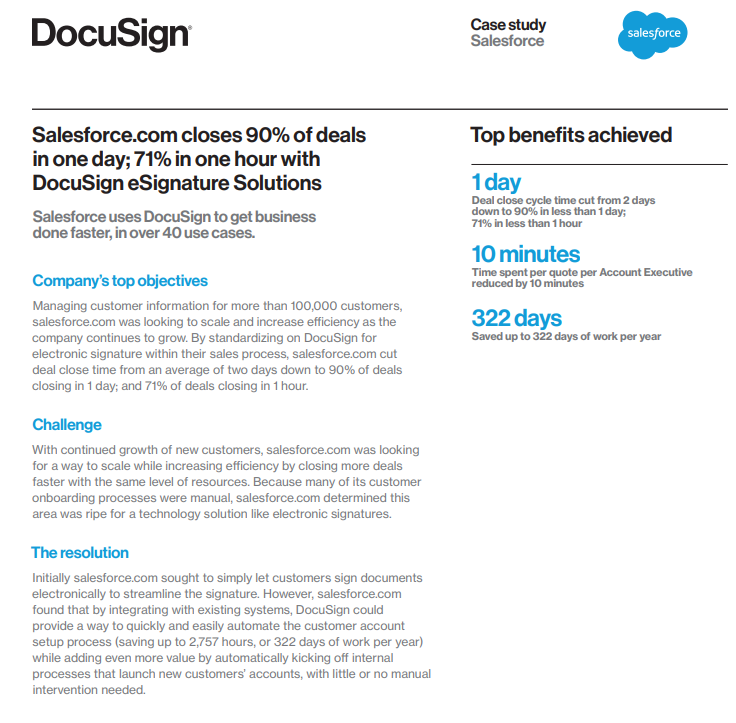
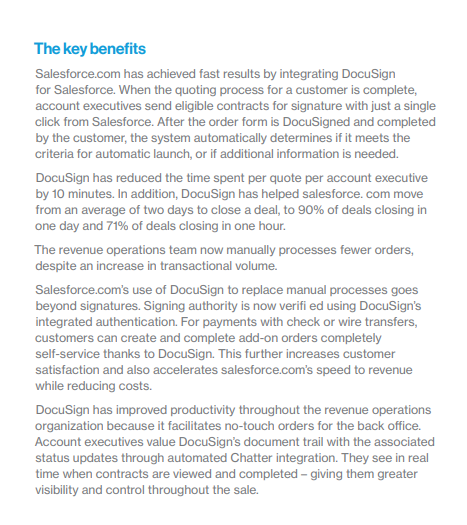
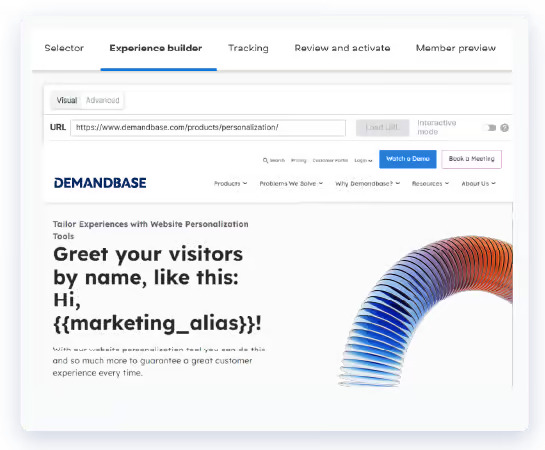 If you don’t want to buy an expensive full-stack tool, here’s a list of small tools that are made just for microsite building and content hyper-personalization:
If you don’t want to buy an expensive full-stack tool, here’s a list of small tools that are made just for microsite building and content hyper-personalization:| Tool Name | Unique Features | Pricing (Approx) |
|---|---|---|
| Mutiny | AI-driven website personalization and ABM microsites, integrates with Salesforce and Marketo | Starts at $3,000/month |
| PathFactory | Dynamic content tracks and personalized microsite flows with deep analytics | Custom pricing |
| Folloze | No-code personalized microsites using AI for content curation and targeting | Starts at $2,500/month |
| Uberflip | Drag-and-drop content hubs and personalized pages for ABM | Starts at $2,000/month |
| Ion Interactive | Interactive experiences like quizzes, ROI calculators, forms, with CRM/MAP integrations | Custom pricing |
| Turtl | Personalized content microsites with analytics on content engagement depth | Starts at $1,200/month |
| Knak | Modular email and landing page builder with brand governance controls | Starts at $1,500/month |
| Paperflite | Content experiences tailored per account with engagement heatmaps | Starts at $1,200/month |
| EngageSoft | Account-level personalization for microsites and ABM landing pages | Custom pricing |
| Ceros | Highly interactive content with motion, animation, and tracking tools | Starts at $3,000/month |
In enterprise deals, remember you have multiple personas to convince like technical evaluators, financial buyers, end-users, executives, etc.
And if you think you can pull this off at the last minute, that’s a pitfall because modern B2B DMUS, buying commitees are huge. Seasoned ABM consultants like Debjit Sen (Founder at Engrow) point out that how large buying teams can be.
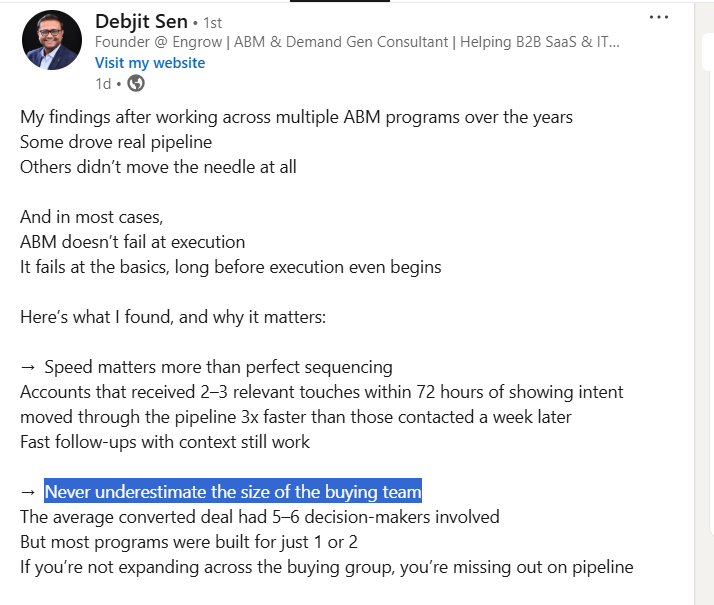
And while he puts the number at 5-6 as per his experience, a study by Terminus says modern DMUs being an 11+ member team isn’t a rare sight!
So, you must personalize not just at the account level, but at the persona level within the account.
PLus, this should be integral to your enterprise ABM motion, and not be a last-minute-stunt.
A sophisticated approach popular now is using a framework like SPICED (discussed in detial later) to guide this mapping:
It about diagnosing each persona’s pain and desired outcomes
Expert Tip: ABM professional Wouter Dieleman suggests mapping SPICED factors to each buying role in your target account, ensuring your outreach addresses the unique context of each role:
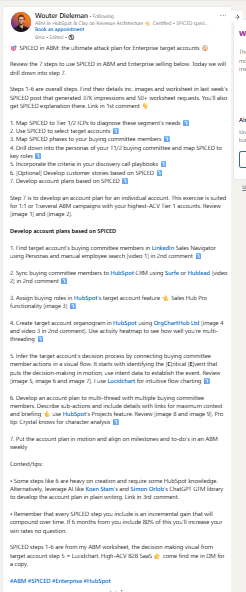
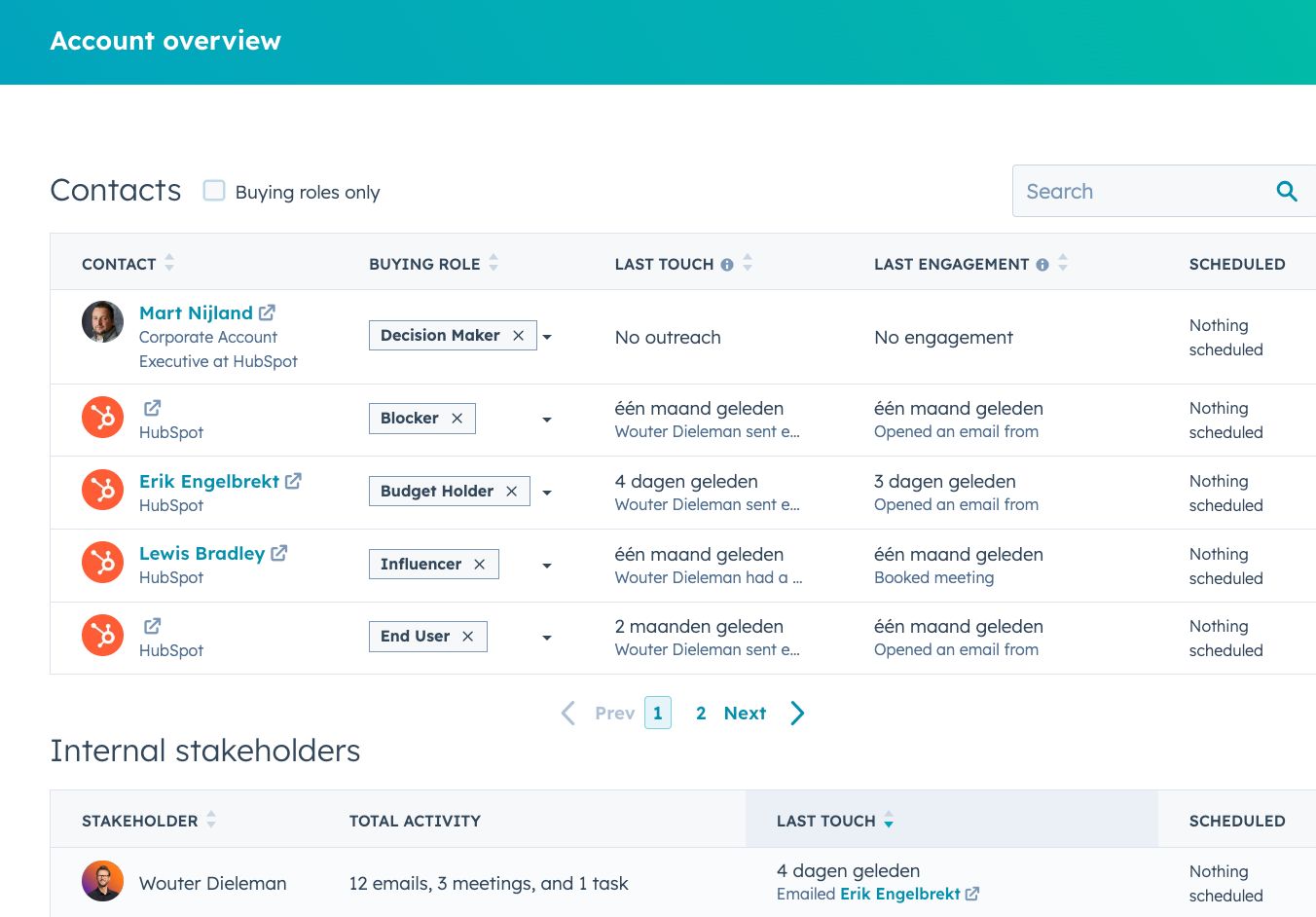
Personalization is not just what you say, but when you say it.
Use your research to identify triggers that you can respond to.
Did the target account just hire a new CTO?
Perfect time to reach out with a message about “Congrats on the new CTO. Here’s how similar companies onboard new tech leadership quickly with our tool.”
Did they just announce a new product line? Send them an analysis of how your services can help ensure the product’s success.
Free Resource: The ColdIQ team shared their gigantic list of 93 sales triggers:
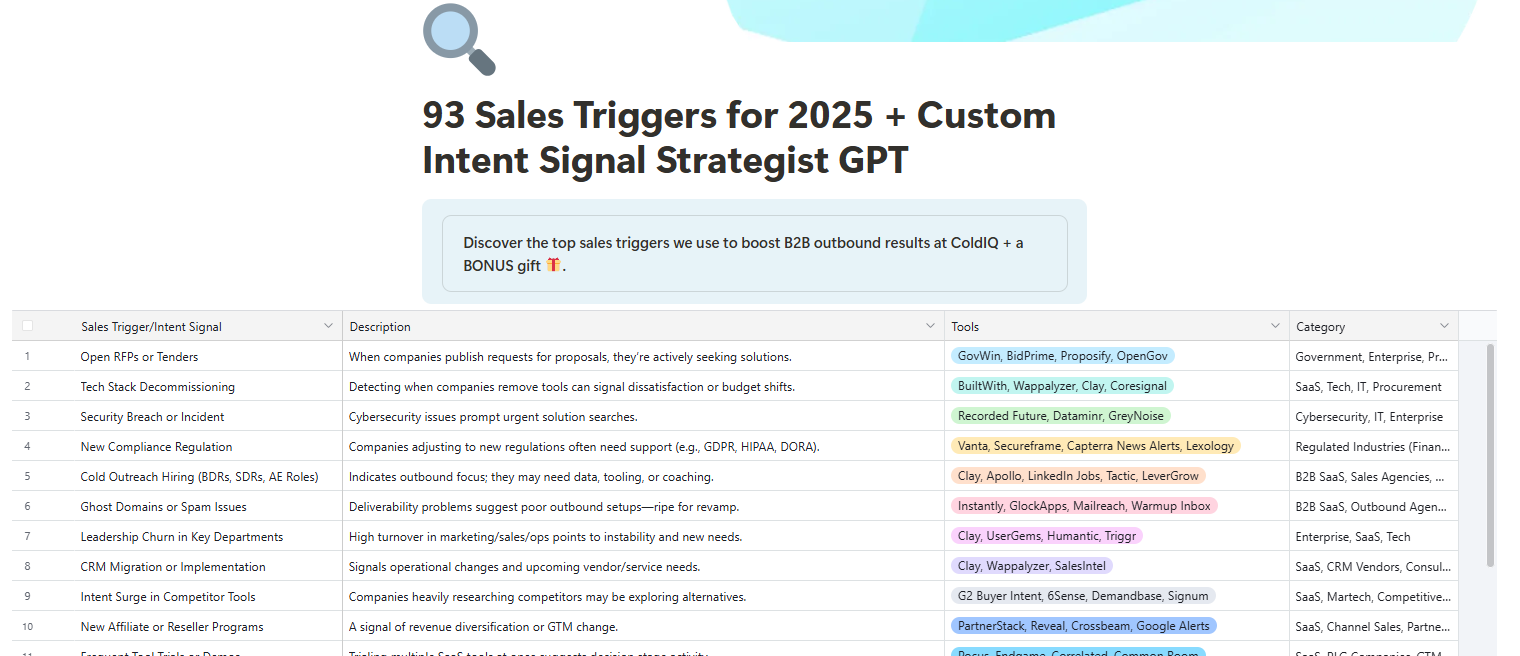
The list maps out all types of sales triggers I could ever think of. And yes, they work!
In fact, they even made a Custom GPT to help you recognize which triggers you should watch out for based on your product/service.
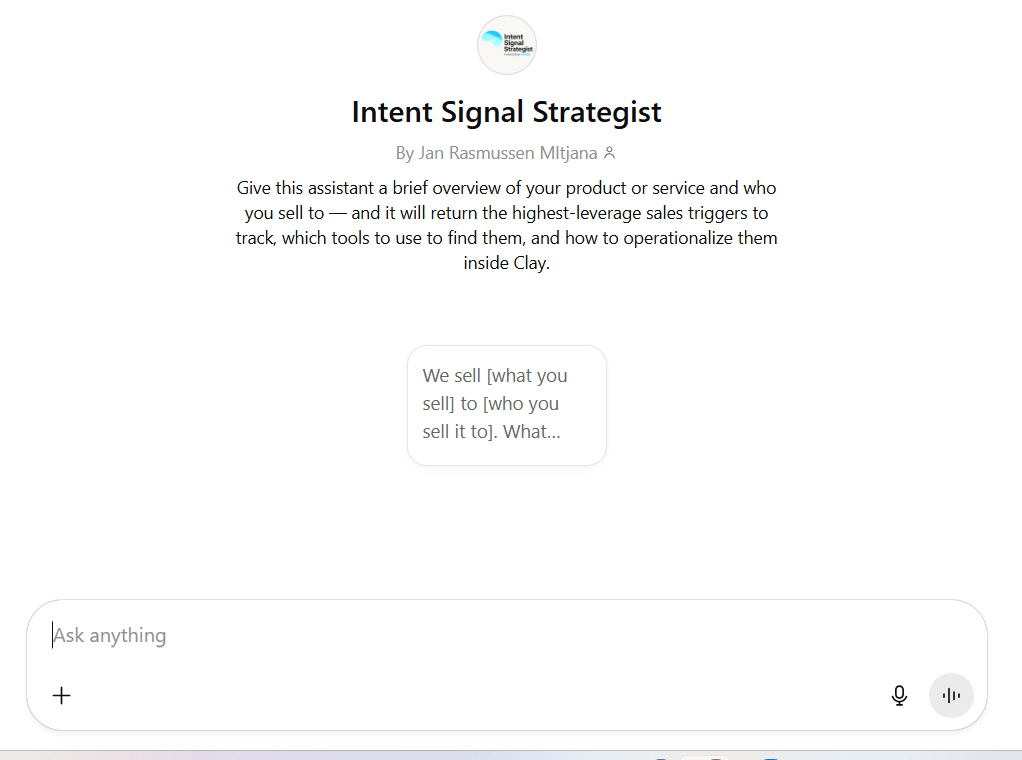
Finally, let’s highlight trust.
In enterprise deals, building trust and credibility is paramount. ABM isn’t just about slinging content; it’s about showing the account that you “get them” and are committed to their success.
Enterprise ABM uses an orchestration of multiple channels and touchpoints to surround the target accounts with your story.
Remember, we’re trying to engage a buying committee and influence them over a long sales cycle. So, a single email or one ad won’t do it.
We need a campaign of coordinated touches that reinforce our value proposition from different angles.
Key channels and tactics in the ABM playbook include:
Yes, direct email to key contacts is still one of the most effective ABM channels. But when done right. That means no generic sequences.
Don’t underestimate socials, and especially LinkedIn:
Platforms like Demandbase, 6sense, Terminus, and even LinkedIn allow you to do account-specific ad targeting.
You can serve display ads or sponsored content that only folks from your target accounts (or even specific roles at those accounts) will see.
Use this to keep your company top-of-mind and reinforce your messaging.
For instance, if you know a target account is in the awareness stage, run ads promoting a whitepaper on a relevant problem. As they move to consideration, run case study ads. The key is precision – measure engagement from each account (these ABM platforms will show you which accounts are clicking or visiting your site). Be willing to spend more per impression for your key accounts; you’re not after volume, you’re after the right eyeballs.
If you are running LinkedIn ads to target enterprise accounts, you can use ZenABM to track ad engagement.
It will show you the impressions, clicks, engagements, and the ad spend of each company with each of your LinkedIn ads:

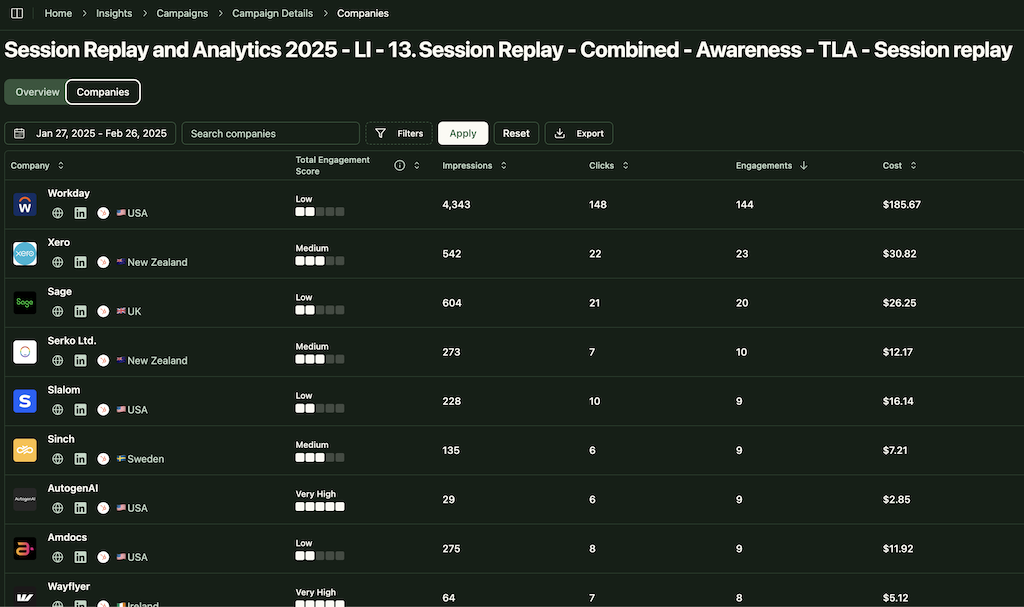
You can send carefully chosen gifts or packages to decision makers at enterprise accounts.
In fact, there are corporate gifting platforms that can send e-gifts or physical gifts with tracking.
Pair gifts with key moments: Say, after a great discovery call with multiple stakeholders, you send them a thank-you package. It humanizes your brand and builds goodwill.
Apart from the ones we discussed, here are some more channels/methods you can try:
I mention sales last here, but in reality, these touches should be interwoven throughout.
ABM thrives on sales and marketing working in tandem on outreach.
For instance, marketing might warm up an account with ads and content, then an SDR or account executive reaches out via phone or LinkedIn referencing that content (“Hi, I saw you downloaded our benchmark report – would love to discuss how [Account] compares to those findings.”).
Every touch builds on the previous.
Work with your sales team to coordinate cadences for each account.
Many ABM practitioners create an Account Playbook that specifies, week by week, which touches will happen (and by whom).
For example:
Caution: Your messaging on different platforms by different teams shouldn’t contradict each other and be in perfect coordination. As an expert on Reddit puts it: “Aligning sales and marketing ensures every touchpoint reinforces the same narrative.”
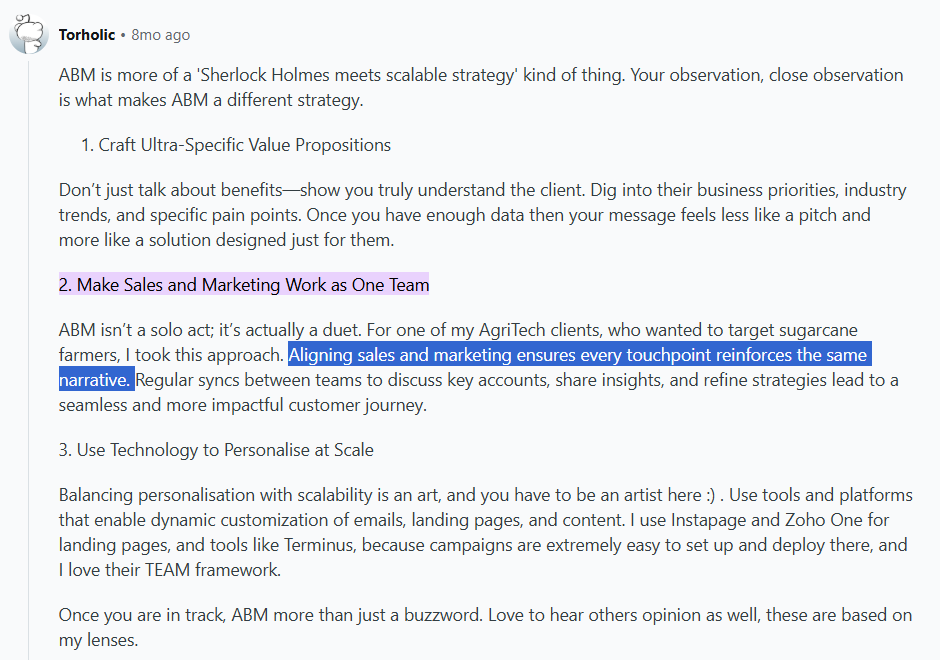
Let’s explore a few advanced tactics that elite ABMers are using:
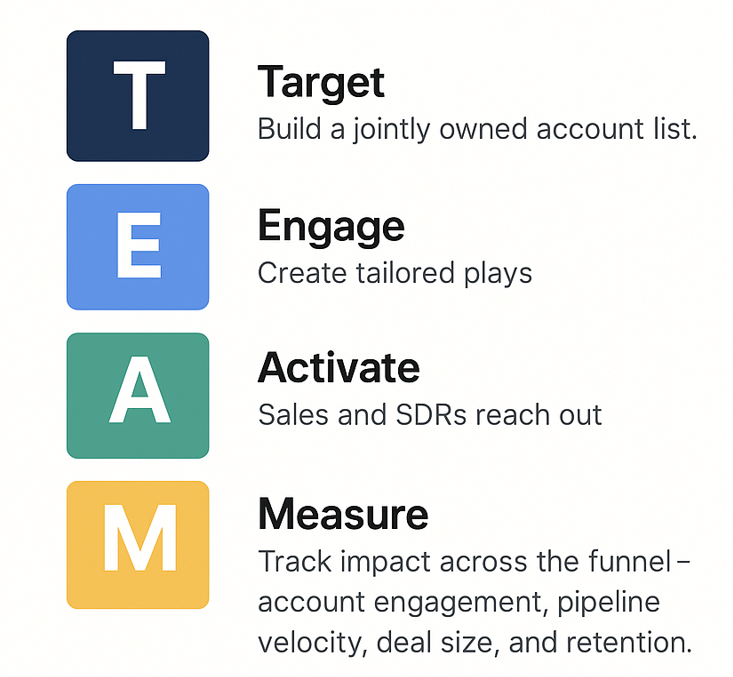
This one comes from Terminus (co-founded by Sangram Vajre, one of ABM’s early champions).
TEAM stands for Target, Engage, Activate, Measure. Essentially, it’s a simple blueprint for executing ABM programs:
Terminus and others promote this framework because it’s easy for cross-functional teams to grasp.
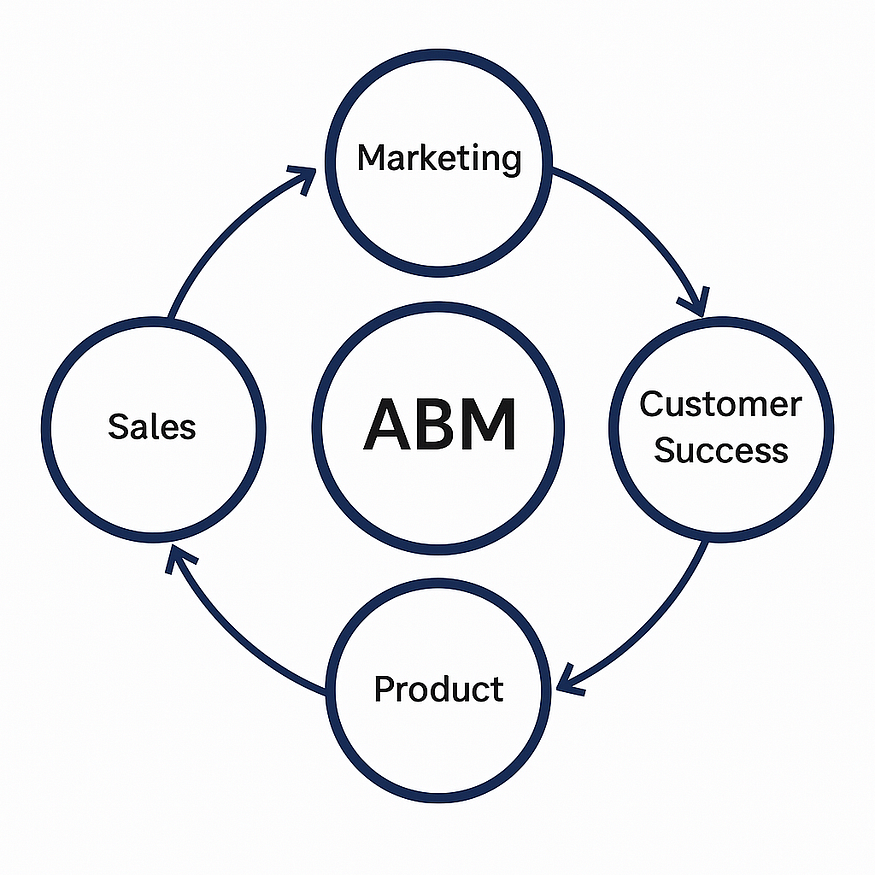
It emphasizes that ABM isn’t just about targeting and engaging (marketing’s usual domain) but also about activating sales and then measuring impact.
I like TEAM because when an organization is new to ABM, it gives them a straightforward checklist:
If you can answer those, you’re doing ABM, congrats.
In fact, you can literally structure ABM dashboards or reports in these four categories.
At ZenABM, we provide you with a similar framework for ABM on LinkedIn.

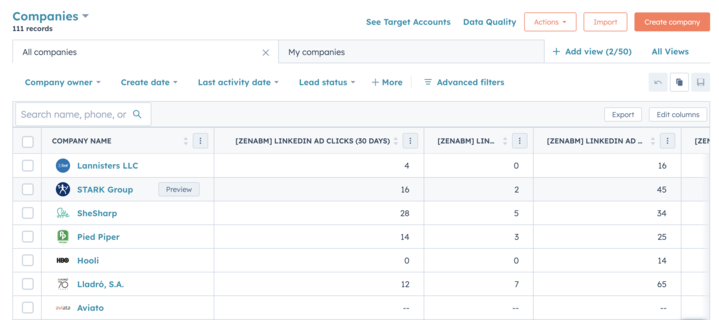


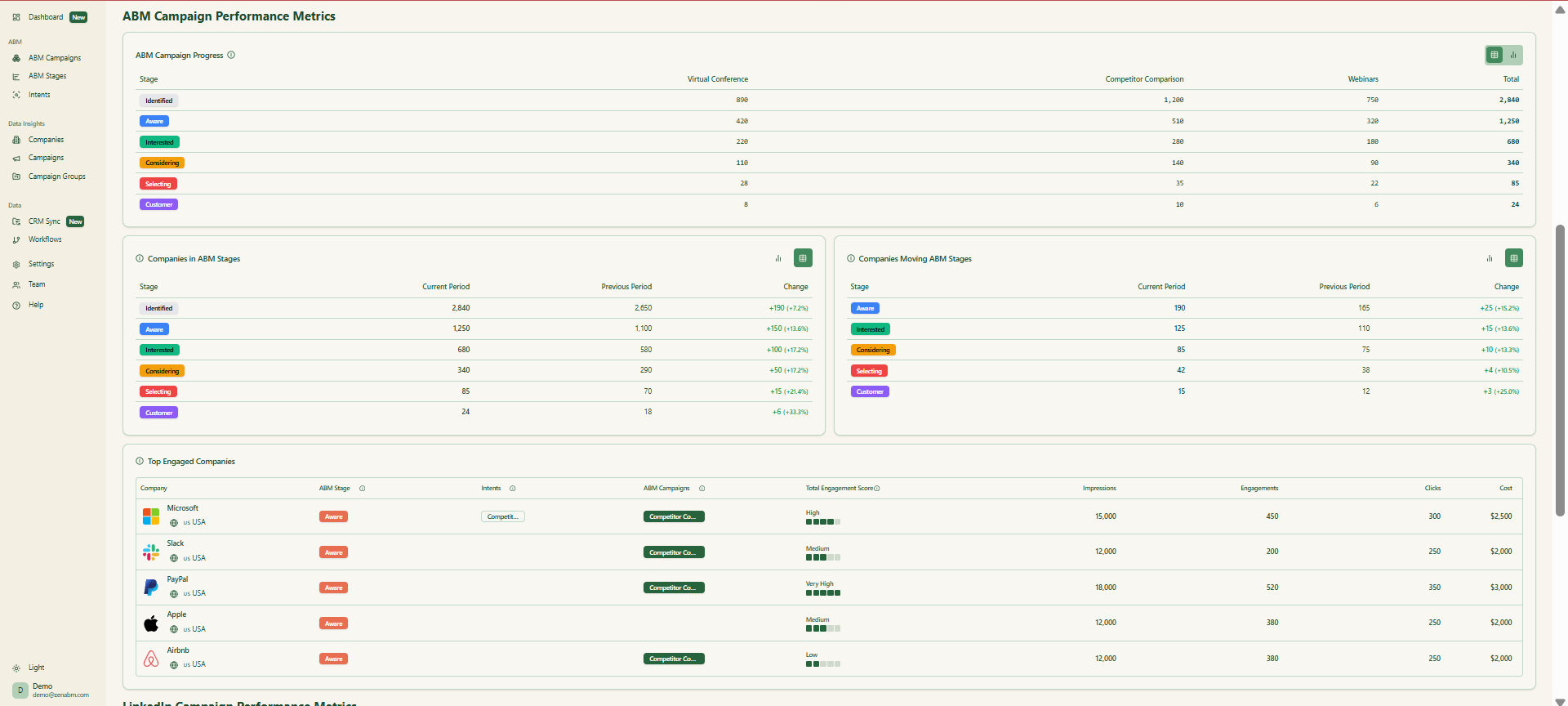
SPICED and MEDDPICC (and similar frameworks like BANT, CHAMP, etc.) are sales qualification methodologies, not invented for ABM per se.
But some forward-thinking RevOps and ABM folks are applying them to ABM.
This framework comes from Winning by Design (a sales training firm).
It stands for Situation, Pain, Impact, Critical Event, Decision.
In sales, it’s used to structure discovery calls and understand a prospect’s needs deeply.
How does this apply to ABM?
Wouter Dieleman, an ABM consultant, demonstrated using SPICED to develop an account plan in his LinkedIn post:
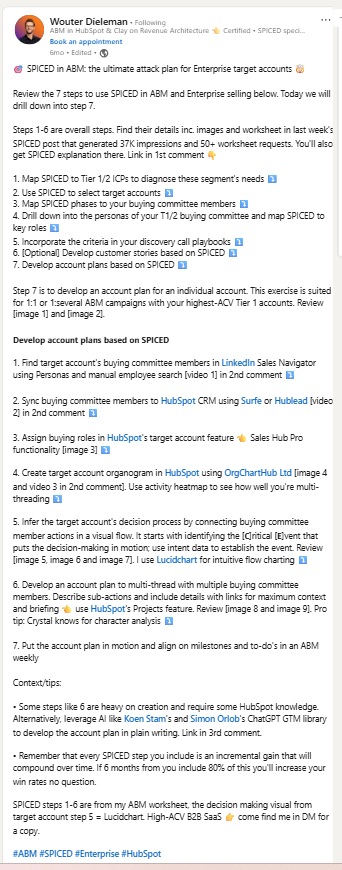

According to this framework, for each target account (or each segment of accounts), you’d outline:
By doing this analysis upfront, your ABM efforts can zero in on the most pertinent points. You align content to pains and impacts, and you time outreach around critical events or buying process stages.
Wouter even suggests mapping SPICED to each buying committee member’s perspective. E.g., Pain/Impact for the IT Director might differ from Pain/Impact for the CFO.
He also shared another comprehensive post on using SPICED for the whole process of enterprise ABM:
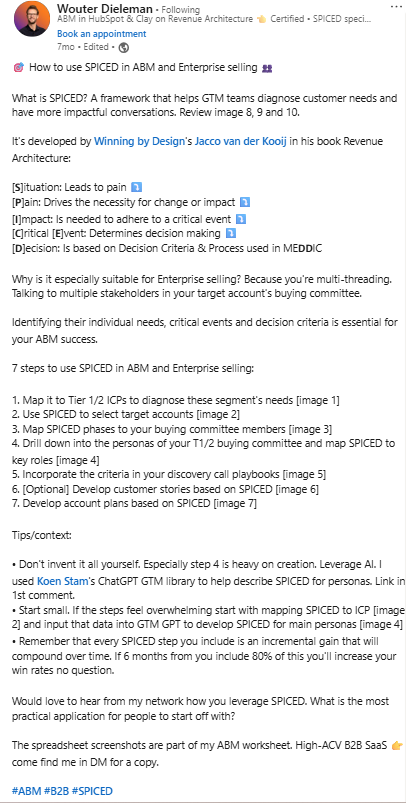
In that post, he laid out seven broad steps for SPICED-driven enterprise ABM:
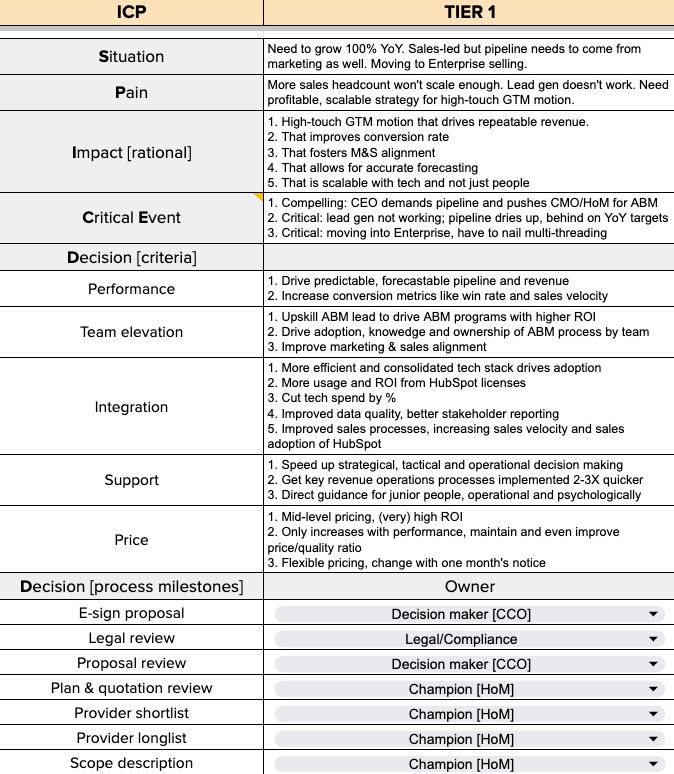
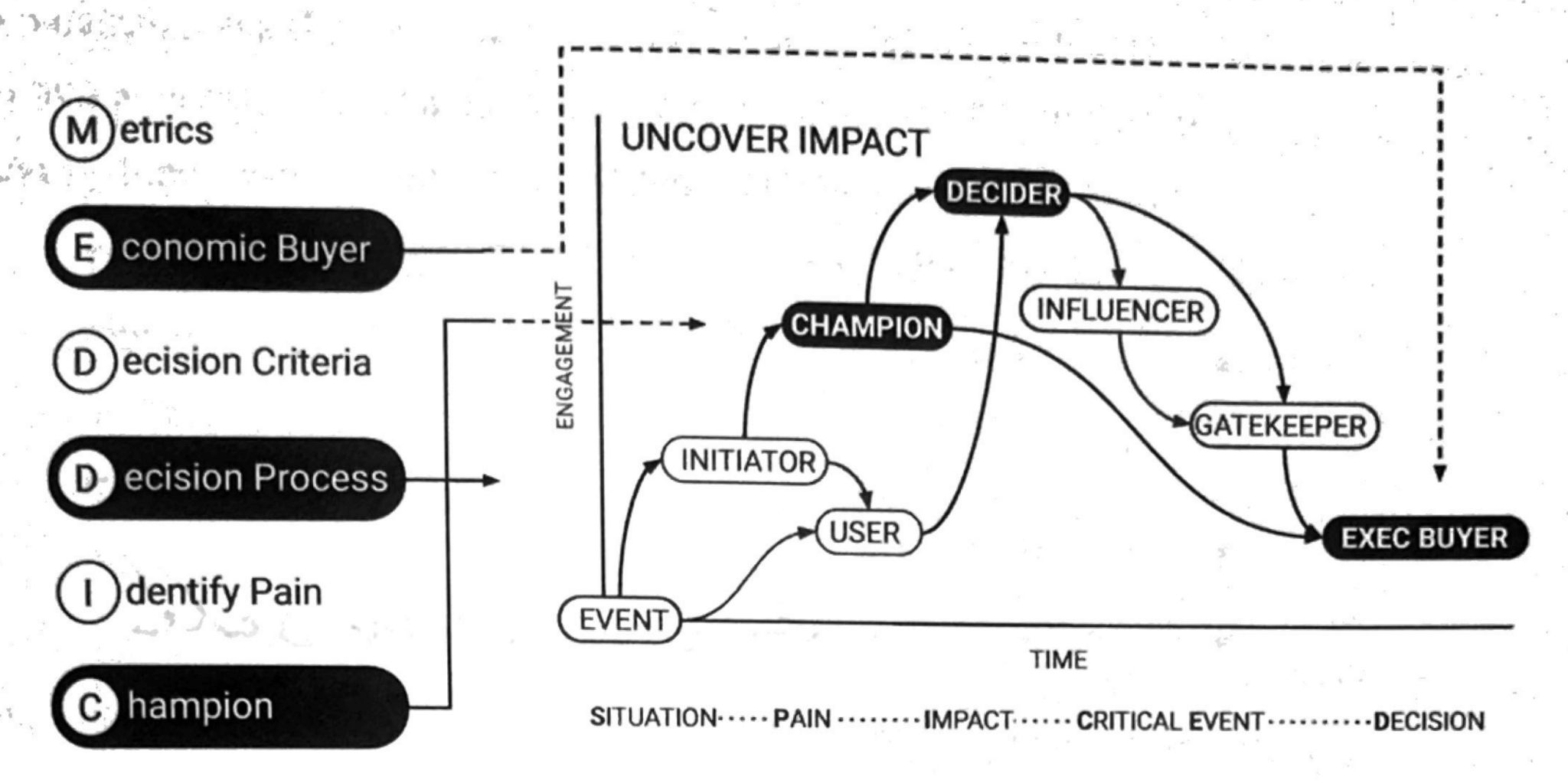
This is a classic enterprise sales qualification framework:
Sales teams use it to ensure all bases are covered in a deal.
For ABM, marketers have started to map their content and campaigns to MEDDPICC elements.
A piece by Jen Collins at MEDDICC.com argued that blending ABM with MEDDPICC is an excellent tactic for sales and marketing alignment:
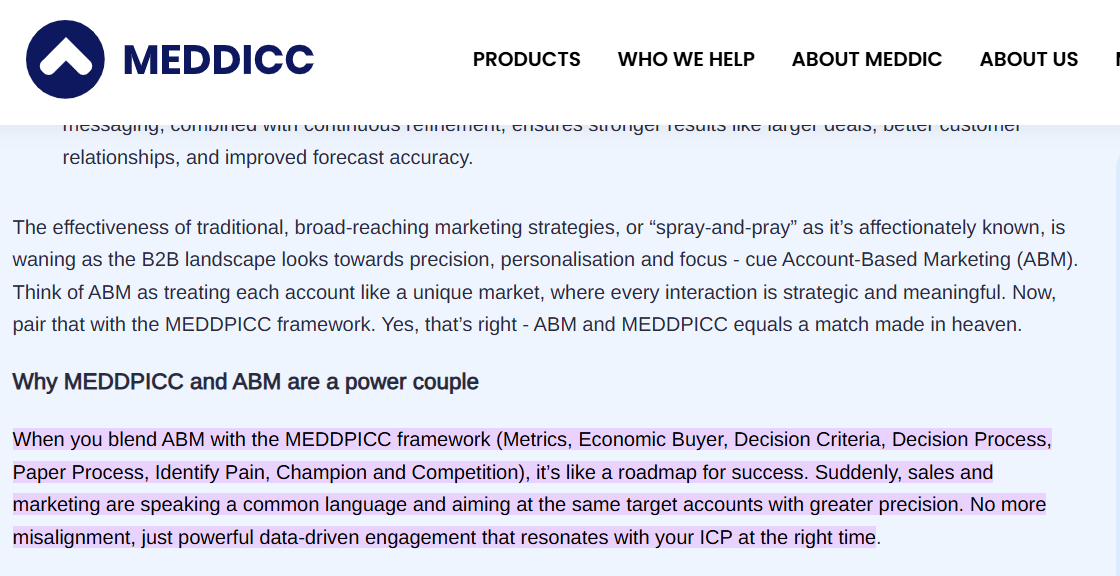
Here’s an example of MEDDPIC applied to ABM:
In essence, enterprise ABM informed by MEDDPICC leaves nothing to chance.
You systematically cover every factor that the sales team will need to close the deal.
One benefit: It greatly helps in tying marketing deliverables to sales deal stages (e.g., “We need a piece of content that addresses Decision Criteria X, because MEDDPICC says that’s critical.”).
| Tech Stack Component | Purpose & Key Functions | Example Tools & Usage Tips |
|---|---|---|
| Account Data & Intelligence | Provide rich data on target accounts to select the right accounts and personalize outreach. Includes firmographics (company size, industry, etc.), organizational charts, contacts, and intent signals (topics accounts are researching). | Tools: ZoomInfo, LinkedIn Sales Navigator, Clearbit for firmographics and contacts; Bombora, 6sense, Demandbase for intent data.
Use these to build your target list and craft relevant messaging. For example, intent tools can tell you if an account is researching a topic (e.g. “zero-trust security”), which can be a great conversation starter. Utilize sales intelligence like LinkedIn alerts for job changes or news at target accounts to trigger timely and personalized outreach. |
| ABM/Marketing Automation Platforms | Offer an integrated ABM suite to combine account identification, journey tracking, digital ads, web personalization, and analytics to scale and coordinate one-to-many ABM campaigns. | Tools: Demandbase, 6sense, Terminus, Triblio, RollWorks, etc.
These platforms can identify anonymous visitors from target accounts (using IP/AI) and gauge their buying stage, run account-targeted ads, personalize your website for target accounts, and aggregate engagement by account in one dashboard. (For example, 6sense uses AI to predict an account’s journey stage, and Terminus uses the “T.E.A.M.” framework to guide ABM execution.) These enterprise tools are powerful but not cheap (often 5–6 figure annual contracts) and require dedicated staff. If you’re new to ABM, consider piloting with existing tools (e.g. your CRM/MAP plus LinkedIn and a small intent data subscription) before investing big. Once you need to manage dozens of accounts at scale, an ABM platform becomes almost necessary to keep track of everything. |
| CRM & Marketing Automation (MAP) | Your core Customer Relationship Management and Marketing Automation systems, configured for ABM, to track account data and run account-specific campaigns while ensuring sales-marketing coordination. | Tools: CRM – Salesforce, HubSpot CRM, etc.; MAP – Marketo, HubSpot Marketing Hub, Pardot, etc. Set up your CRM with an account-centric view: use Account objects, link all leads/contacts to the right accounts (lead-to-account matching tools can help automate this), and flag your target accounts and their tiers in fields.
This way, sales and marketing can filter and report on ABM segments easily. Use your MAP to deliver account-specific email nurtures and measure engagement (many MAPs offer ABM features now, e.g. Marketo’s ABM module, HubSpot’s “Target Accounts” tool). Integrate your ABM platform (if using one) with the CRM/MAP so that data flows both ways – for instance, if a target account hits an engagement threshold, automatically create a task in CRM for the sales rep. Strong CRM/MAP integration ensures no ABM insight falls through the cracks. |
| Personalization & Sales Engagement | Tools to personalize outreach and coordinate multi-touch engagement by Sales/SDR teams, ensuring a human touch at scale. | Tools: Sales Engagement Platforms like Outreach, Salesloft for orchestrating personalized email/call sequences at scale; Chatbots like Drift that recognize target accounts (by IP or cookie) and can greet them with tailored messages or instantly route them to a rep; Direct Mail platforms (Sendoso, Alyce) integrated to send physical gifts or notes when certain triggers hit (e.g. a meeting is booked or an opportunity reaches a stage).
Teams are even leveraging AI assistants to draft first-pass personalized emails or to summarize account news for reps. Use these to augment your team’s efforts – e.g. an AI tool can save time by generating a custom intro paragraph for an email (based on the account’s context), which the rep can then refine. However, don’t over-automate: ensure a human reviews communications to keep them genuine. Over-reliance on automation can lead to generic “uncanny valley” messaging. Remember, “You can’t build a trusting relationship with a persona” – real human interaction is irreplaceable for building trust. Use tech to get the meeting; let your people build the relationship. |
| Analytics & Reporting | Provide visibility into account engagement and ABM impact, so you can measure success and adjust strategy. | Tools: Most ABM platforms come with dashboards (showing account engagement, account funnel stages, pipeline influence, etc.).
Additionally, attribution tools like Bizible can track multi-touch influence (though ABM often relies on simpler account-centric metrics). ABM analytics solutions like Clari (RevOps tool) or ZenABM can connect marketing and sales data to show which accounts are “heating up” and predict which deals might close. For example, ZenABM is a plug-and-play ABM analytics platform that pushes LinkedIn ad engagement data at the account level directly into your CRM, showing which target accounts are engaging, when they’re showing buying intent, and which campaigns are driving real pipeline opportunities. This helps revenue teams see which campaigns or content actually convert and allows personalized follow-up for those engaged accounts. Whatever tools you use, set up account-level dashboards – e.g. how many target accounts are in awareness vs. engaged, how many in pipeline, how many closed and track engagement over time. The tech should alert you to which accounts are surging in interest and which are stagnating, so you can double down or adjust tactics accordingly. |
| Data Quality & Maintenance | Clean, up-to-date data underpinning all of the above to avoid “garbage in, garbage out.” | Process/Tools: Regularly maintain and enrich your account and contact data. Even the best ABM tech won’t help if your target list is wrong or contacts are outdated.
Assign someone (e.g. in RevOps or an ABM ops role) to own data hygiene, merging duplicate records, updating job titles, refreshing firmographic details, and ensuring industries/tags are correct. Use data enrichment services or CRM features to keep info current. Poor data quality will derail personalization and waste resources. In short, ABM is too important to be undermined by a bad email address or mis-tagged account. Invest in data quality so your fancy tools have accurate fuel. |
| Strategy & Alignment (Tech in Context) | Ensuring technology serves your ABM strategy, not the other way around, and getting ROI from your stack. | Key Principle: Always remember that strategy leads, technology follows. Identify your ideal customer profile, target accounts, value prop and content strategy before layering on tools. If you lack a clear ABM strategy and marketing-sales alignment, no software will magically fix it.
Many organizations churn through big-name ABM platforms because they jumped in without a plan. Pick tools that fit your strategy (you may not need every tool). Also, ensure you’re getting ROI: a full enterprise ABM stack can exceed $100k/year, so use what you pay for. It’s better to run a scrappy, manual program well than to have an expensive platform that sits underutilized. Start lean: For example, test ABM with a pilot using your existing marketing automation + LinkedIn ads + maybe a small intent-data feed. Prove out some wins and pipeline, then scale up tool investments as needed. |
ZenABM deserves a special call-out as a modern tool focused on LinkedIn-based ABM analytics and orchestration.
It augments your enterprise ABM strategy by bridging the gap between LinkedIn advertising engagement and real sales outcomes.
Here are ZenABM’s key LinkedIn ABM capabilities and how they empower your team:







Now ABM is getting the footage it deserves.
And experts are adopting high-end methods and tools, especially for enterprise accounts.
Here are the major shifts in enterprise ABM (or ABM in general) happening now:
In short: Enterprise ABM’s core principles, like highly personalized content and strategic client treatment, are here to stay, but execution will grow smarter, more holistic, and more AI and data-driven.
Enterprise ABM requires deep personalization, strategic alignment, and precise execution enabled by smart technology.
Use this guide and platforms like ZenABM to master enterprise ABM and outperform your competition.
Try ZenABM for free now or book a demo.